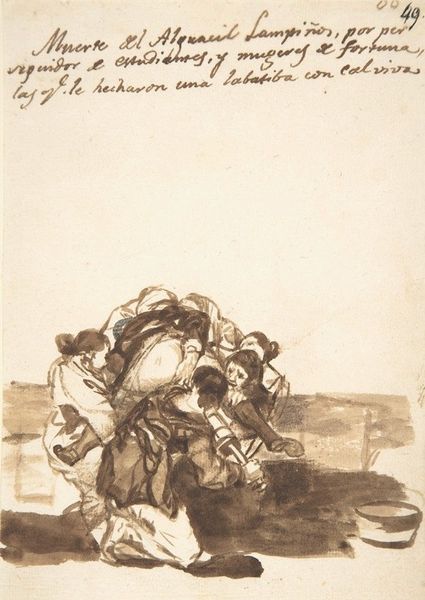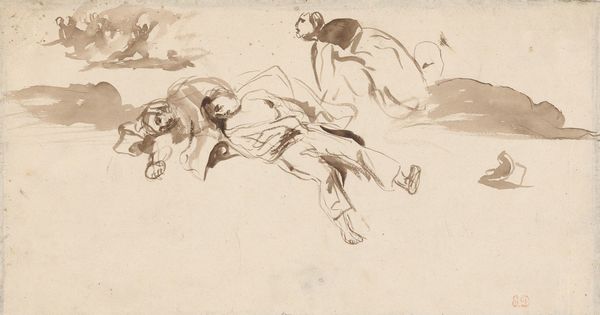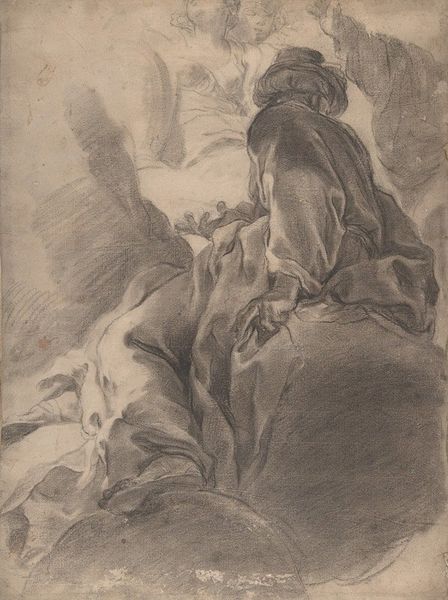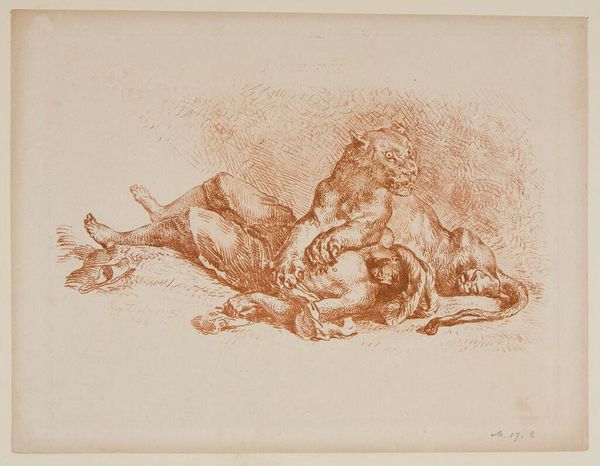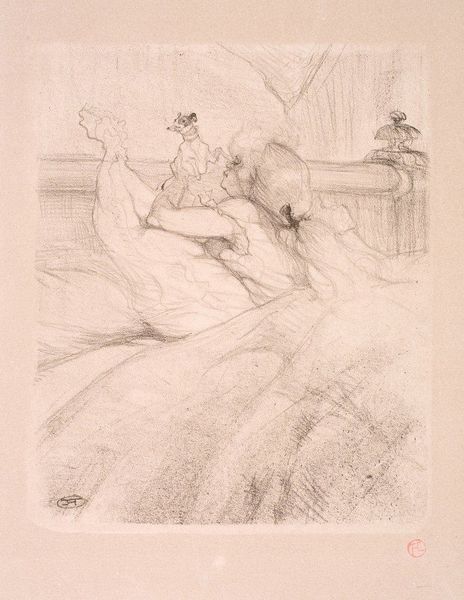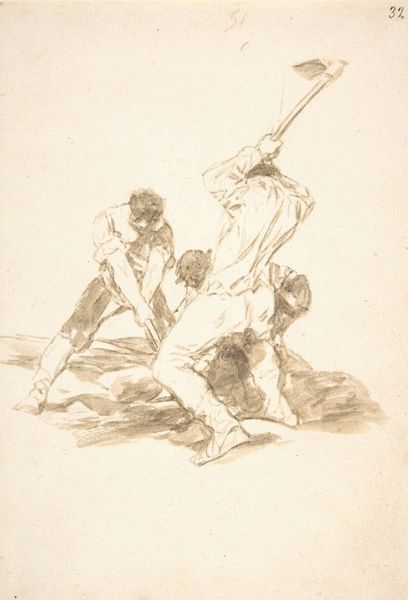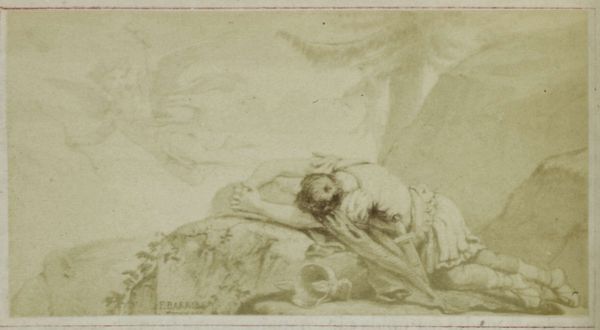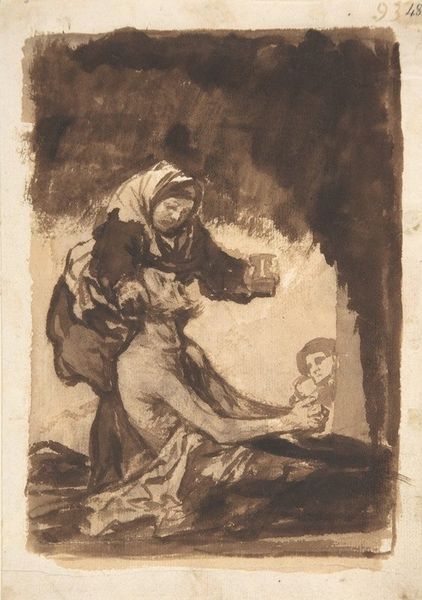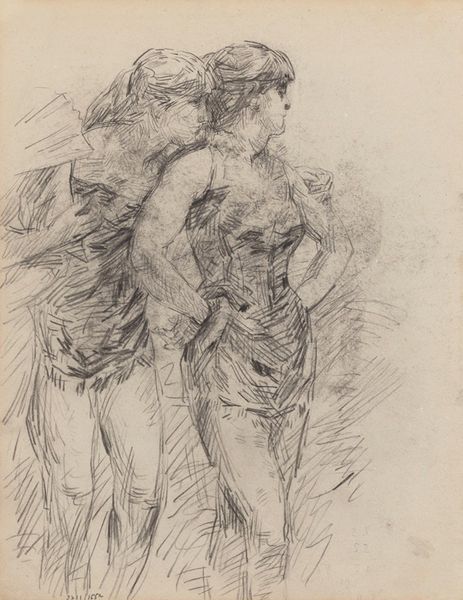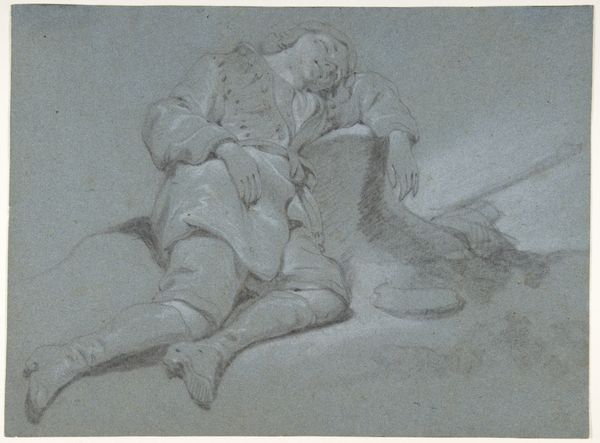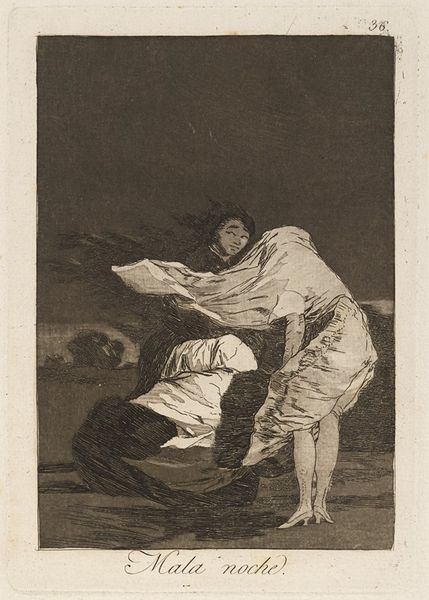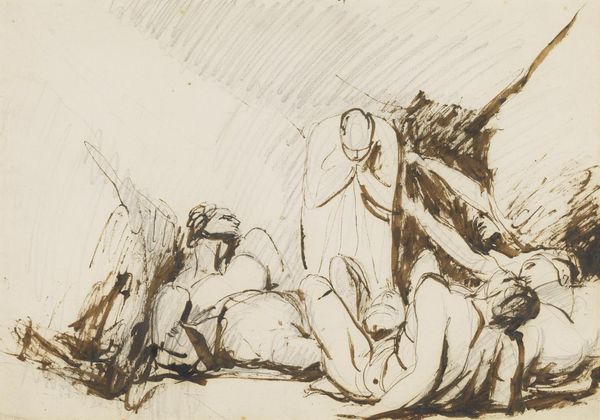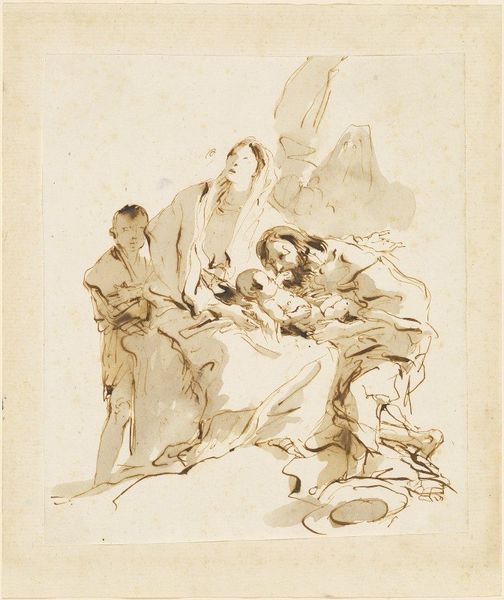
drawing, charcoal
#
drawing
#
charcoal drawing
#
figuration
#
romanticism
#
charcoal
#
history-painting
Copyright: Public Domain: Artvee
Editor: This is a charcoal drawing titled "A man stabbing another" by Francisco de Goya, created sometime between 1812 and 1820. The scene is stark and unsettling, really grabbing your attention. What do you see in this piece? Curator: Immediately, the clustered figures invoke classical sacrificial scenes. Consider Abraham and Isaac, but inverted into brutality. Goya lived through immense upheaval. He was witness to the Peninsular War, and this raw depiction likely echoes the violence and trauma of that era. Do you notice how the aggressor's face is relatively defined, while his victim's face is hidden? Editor: Yes, the figure doing the stabbing looks so intent and full of rage while the other is almost anonymous. Curator: Precisely. The lack of individual identity for the victim could represent the dehumanization inherent in violent conflicts. Consider the enduring symbolism of Cain and Abel. The obscured face might embody not just one life, but countless faceless victims across all wars and times, etched into our cultural memory. What lasting effect does that have? Editor: So the universality of the symbol makes it particularly tragic and impactful. I guess the lack of a detailed background further emphasizes the focus on the human figures. Curator: Indeed. Goya uses light and shadow not to define a space but to amplify the emotional drama. The swirling lines in the background are they smoke, chaos or memories that will never fade? This work functions almost as a modern history painting. We see the weight of historical trauma. Editor: This gives me a whole new perspective. It's much more than just an isolated act of violence; it’s a powerful statement on the nature of conflict itself. Curator: Exactly. And perhaps, a cautionary reminder etched in charcoal. The images are symbols that still resonate today, if only we care to understand.
Comments
No comments
Be the first to comment and join the conversation on the ultimate creative platform.
